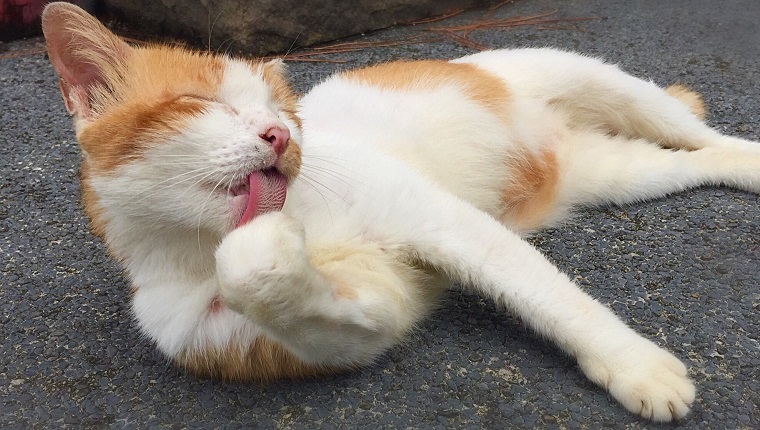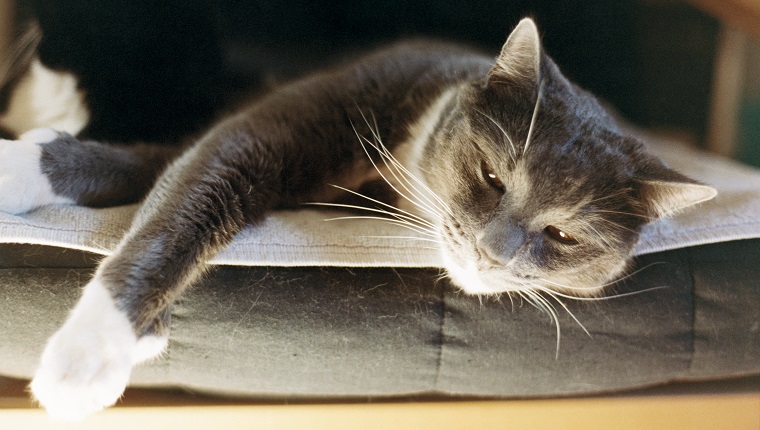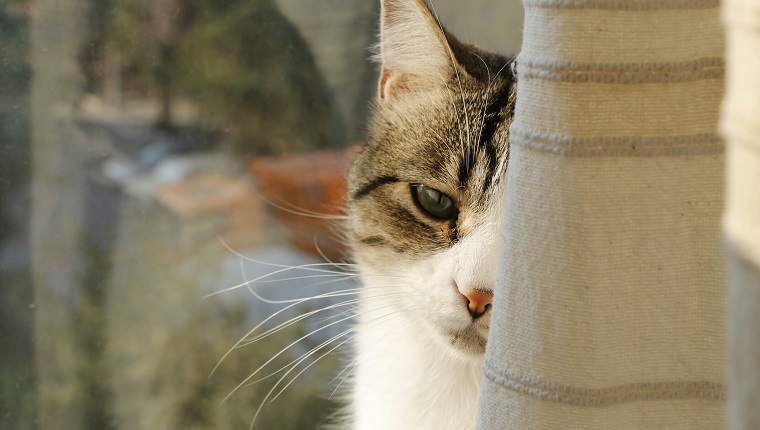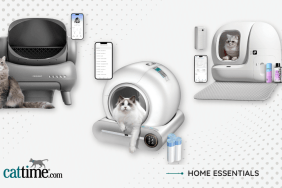If your cat is in pain, you may miss some of the signs if you don’t know what to look for.
Kitties don’t typically display pain as overtly as other animals might. They don’t often yowl if they feel sick; in fact, they might even try to hide their pain until they’re seriously ill.
That makes sense if you think about cats in the wild. They wouldn’t want to advertise to potential predators that they’re feeling vulnerable. However, for our furry family members, we need to know when they’re in pain so we can help them.
How do you know that your cat is in pain and it’s time to take them to the vet? Here are a few signs that can help you tell if your cat is hurting.
Peeing Outside The Litter Box
If your cat is litter trained and suddenly starts going potty outside the litter box, it could be a sign that something’s wrong.
A kitty who goes right outside the litter box might actually have a medical condition, like an undiagnosed case of hip dysplasia. More commonly, cats with UTIs frequently end up going outside the litter box — or even on their human’s favorite furniture or clothing.
They do this because they’ve associated the litter box with pain, and they’re trying to get your attention to the fact that something’s wrong.
If you suspect a urinary tract infection, you should take your cat to the vet right away. UTIs in male cats can be fatal.
Excessive Licking Or Grooming

A cat with an injured or arthritic limb may begin licking and grooming the injured part excessively. Allergies and skin conditions can also cause cats to over-groom.
If you notice your cat paying too much attention to one part of their body, such as a leg, that may indicate that they feel pain or irritation in that area.
If they’re limping in addition to this, you should probably take them to a vet and get them checked out.
Lack Of Appetite
Sick cats may lose their interest in food and treats. If your cat has stopped eating or just barely picks at their food, something could be seriously wrong.
The situation may be even worse if your cat has lost interest in drinking, since dehydration can be a serious concern.
If your cat is not drinking enough but is still eating, feed them wet food to try to get some liquid back into their diet. Then take them to the vet.
Decreased appetite or thirst can indicate a big problem. Remember, though, that there are always exceptions to the rule. Although sick cats might lose interest in water, cats who are developing diabetes will start drinking water excessively.
If you notice changes in appetite or thirst, take your cat to the vet, as there are too many underlying conditions that may be causing it. Your vet will form a proper diagnosis and prescribe treatment.
Activity Diminishes

A kitty in pain may not cry out, but they may start pulling back from being social and playful.
They may hide in corners for more than just sleeping. They may stop jumping on desks to sit on your computer or stop climbing on their favorite cat tree.
And although one of the signs could be excessive grooming, a cat in pain may also stop grooming altogether if it hurts too much.
If your cat seems more lethargic, shows an aversion to exercise, or gains weight due to inactivity, it’s time to see the vet.
Look Into Their Eyes
The eyes can be a window into your cat’s health. For real.
Dilated pupils may indicate pain. Smaller pupils could indicate a problem with the eye itself.
If your cat is squinting, this can mean their eye suffered an injury, there is debris trapped in the eye, or that there is an eye infection. Your cat may paw at their eyes excessively if they are in pain, as well.
Get to the vet if you notice anything unusual about your cat’s eyes.
Strange Behavior
This is a bit of a “catch all” category, but pay attention to strange changes in the behavior of your cat.
This could take the form of a different type of meow your cat suddenly adopts or overly aggressive biting behavior from a cat who was always calm before. Your cat might start breathing harder or faster, which could indicate pain, asthma, or allergies.
Even excessive purring could be a sign that your cat is trying to comfort themselves, especially if they don’t normally purr so frequently.
Stay on alert if kitty is acting unusually. You know your cat best, so only you may recognize if their behavior isn’t quite right. If you suspect something is wrong, take them to the vet for a checkup. It’s better to be safe than sorry.
Has your cat ever showed signs of pain? How did you know? What did you do to help them? Let us know in the comments below!









